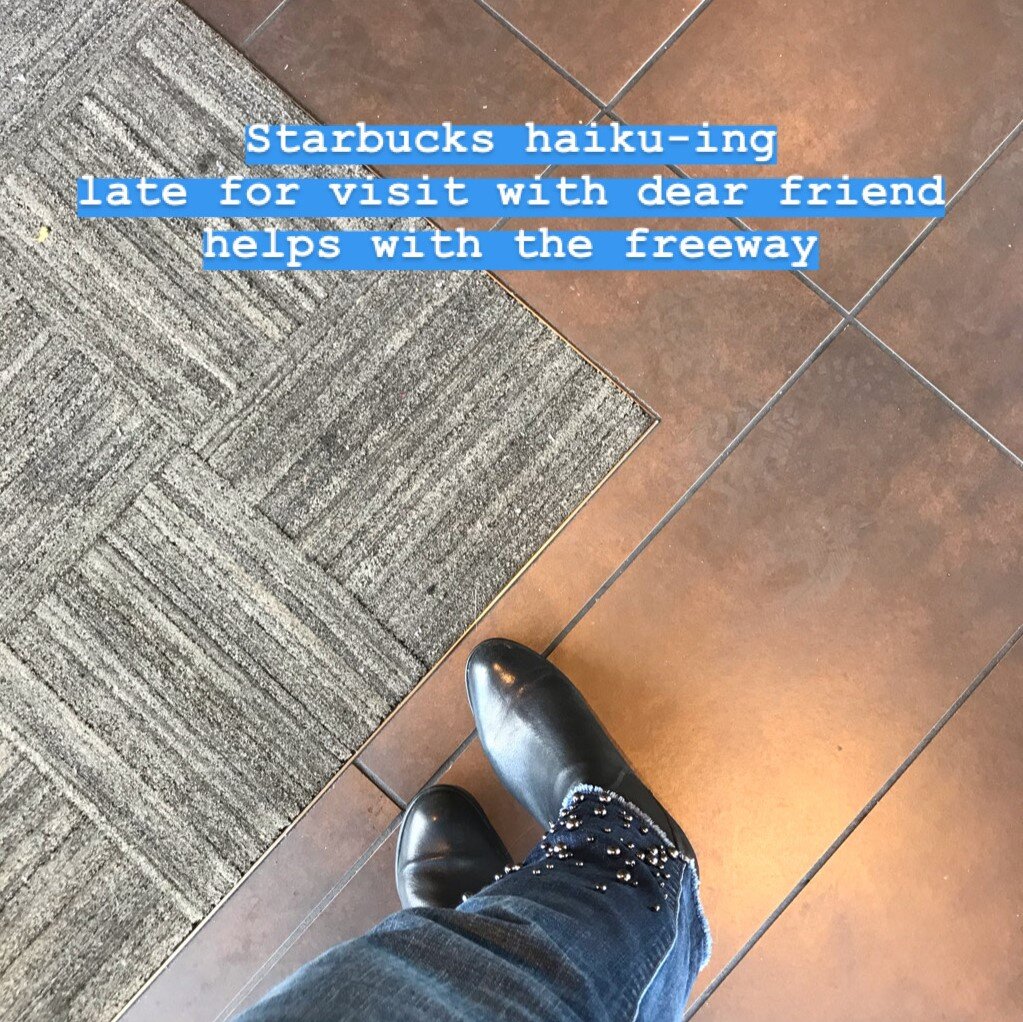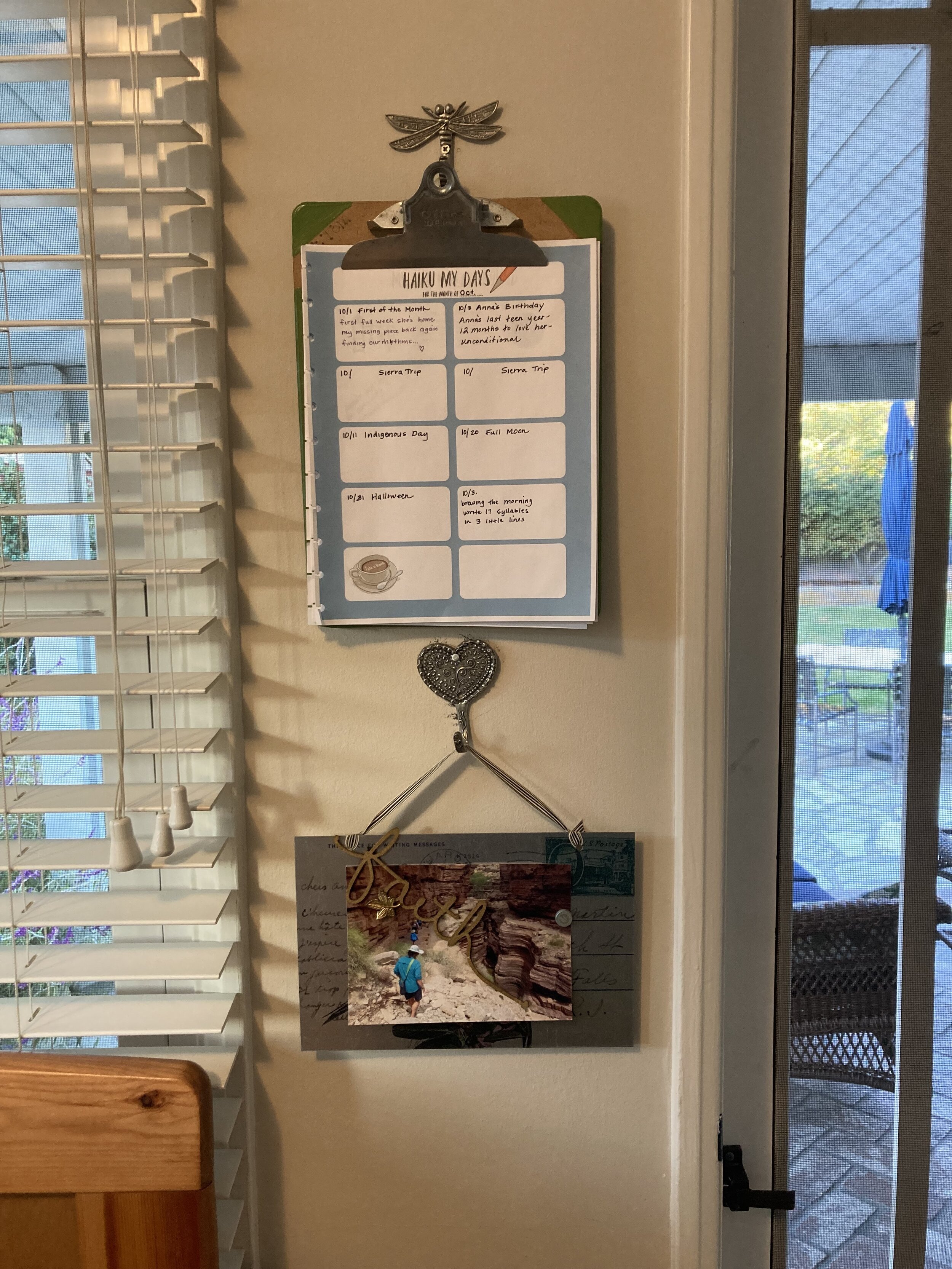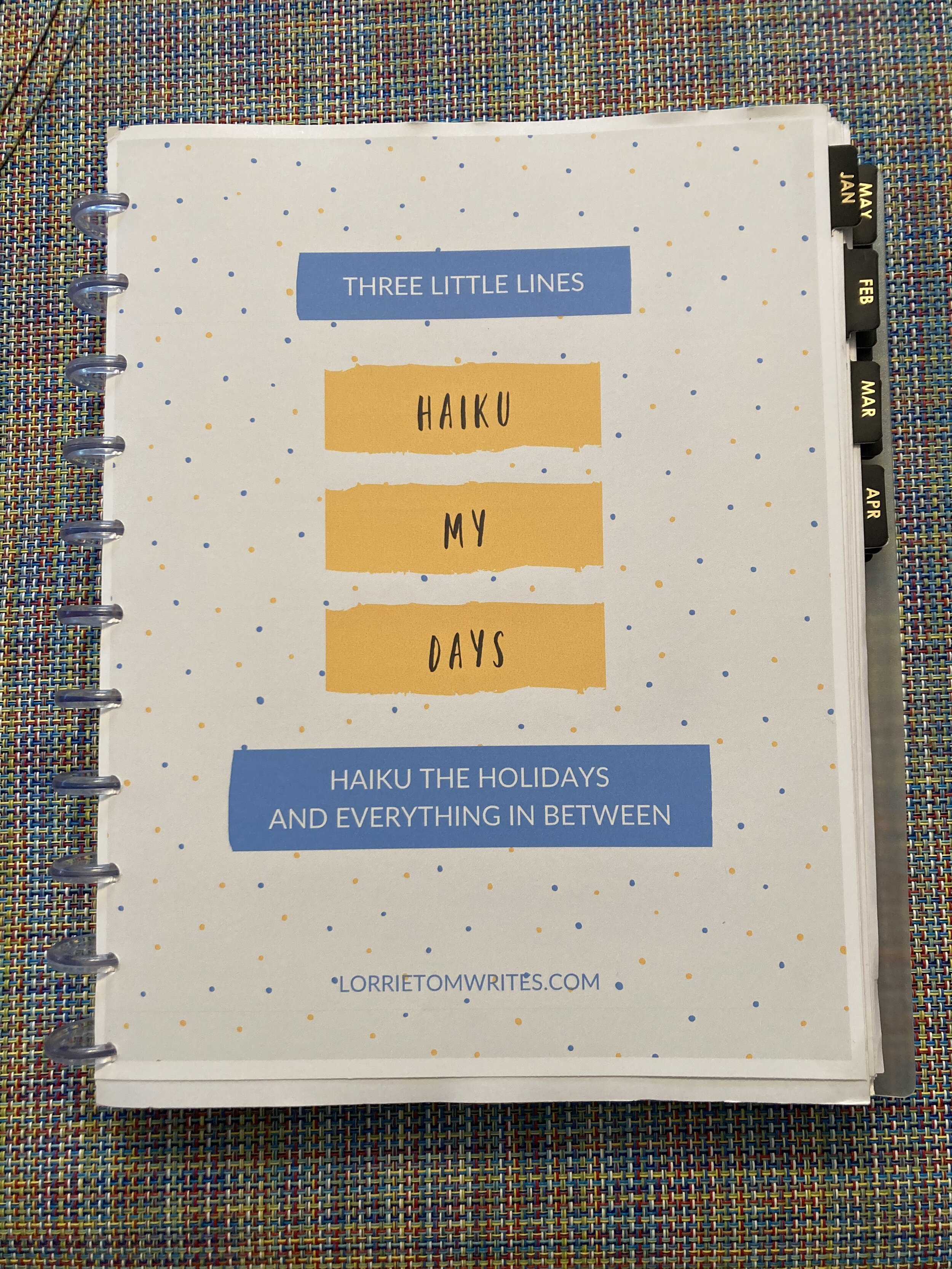Help Your Kids Love Writing With Three Little Lines Anyone Can Write
3 Steps for Writing 3 Little Lines
I can’t quit writing haiku! Maybe it’s because I approach writing these tiny poems in a relaxed and sustainable way. Some months I write a ton. Some months I write a dozen. And that’s OK. I pay attention to the rhythm of my life and go with the writing flow that works for me. No matter how many haiku I write or don’t write, it always feels good to get words on the page. I feel like a writer.
Writing haiku is a creative habit that helps YOU and your entire family love writing.
Of course, you don’t have to commit to writing haiku for an entire year. Maybe you want to write about a few holidays, or during a vacation? Any amount of haiku will do! One month, or even a week, can be a fun way to get your entire family writing.
I’ve made learning how to write haiku fast and easy. This post is a deep dive, but my Minimalist Guide to Writing Haiku is a great resource to have on hand when you start writing your fabulous haiku.
And now for the deep dive! Let’s get to it.
Step 1. Learn the Lorrie Tom Version of Haiku.
Haiku originated in Japan and there are many guidelines for creating this aspirational poetry tradition. Please know that I respect this beautiful genre. Becoming a haiku master is no joke. However, simplifying haiku encourages you and your kids to write more often and enjoy the process. (Scroll to the end of this post if you want to read about the benefits of writing haiku. Plus, it’s good for your creative soul even if my approach bends the rules just a little bit!)
Haiku are 3-line poems.
The first line is 5 syllables, the second line is 7 syllables, and the third line is 5 syllables.
Don’t worry about punctuation. You don’t need any unless you want it.
Many would consider this haiku heresy, but if you feel like you can’t express your idea in 17 syllables (5+7+5=17), make a long title. Or, put an asterisk (*) after a word and write an explanatory note below your haiku.
For samples of my haiku, check out my Instagram account @lorrie_stories.
Step 2. Get Your Writing Supplies and Space Ready.
It’s important to give your family visible evidence that you value writing.
Pick one of the following:
Post-its on the fridge (with pen/pencil nearby).
Whiteboard with marker.
Dedicated haiku journal (that’s easy to leave open whenever someone walks by).
Clipboard with copy of freebie printables. Place the clipboard in a location everyone sees often.
Make one of your own that works best for you.
For years, I’ve used the clipboard in the photo below. It’s one of my prized possessions because it used to be my mother-in-law’s. She used it when she taught high school chemistry. It still travels with me whenever I write outside or need a portable desk. It hangs from a dragonfly hook on my office wall. When the month ends, I put the finished pages in my keepsake haiku journal (see videos for a glimpse of my Haiku My Days Journal).
Step 3. Write Haiku Without Anxiety or Stress.
For now, write haiku just for YOU. At some point, your kids will want to join you--especially if you don’t ask them at first! (Yeah, reverse psychology!) Remember, you are leading the way for your kids to begin a writing habit.
Your writing habits—not how well you write—show your kids that writing is an important part of life.
Here’s how to begin writing:
Grab your writing supplies.
Take two deep breaths and find a haiku topic by noticing what’s happening in your mind or the world around you. Usually, I sit down for a hot minute and let the world speak to me.
Write without judging yourself. Savor the moment you’ve claimed to slow down and notice what’s happening in the world around you.
If you get words on the page, you’ve accomplished something fabulous. Let your family catch you counting syllables on your fingers. (If you don’t know the syllables for a word, Google it!). If you don’t have your phone, you can also say the word aloud and count how many times your jaw goes down when saying a word.
Be open to any topic that comes to mind. As I prepared this post, I reviewed two years of my haiku and noticed that the topics I wrote about most were:
Drinking coffee in the morning
What’s happening in my backyard
Faith
Current events
My husband and daughter
Sometimes it takes a lot of practice to believe you can find your own writing topics so here are some nudges that will get you writing sooner.
If you’re writing about a holiday, what does the holiday mean to you? What are you doing for the holiday?
Step outside. Sit on your patio. Look out the window. Walk a bit. What do you see?
Get up before everyone else in your house. Sip a warm beverage. What are you noticing in the quiet moments of morning?
If you’re waiting in a line (like carpool or Starbucks) pay attention to what folks in the line are saying or doing. Writers have permission to eavesdrop and it’s more entertaining than scrolling Facebook!
Finally, I’ve made a list of haiku first lines that I recycle for new haiku quite often. Feel free to borrow the lines and write the second and third lines on your own.
6. Once you’ve written your masterpiece, read it aloud. If you like the sound of it, you’re done. If not, it’s still fine to be done. Alternatively, you can tweak your haiku by changing, re-arranging, adding, or deleting words.
Remember, it’s the process and not the product that’s most important with this approach.
7. Finally, make sure your masterpiece is visible. If you’re super bold, share it with a family member. Haiku masters believe that a haiku doesn’t exist until it is shared. I love that sentiment.
Success Tips
1. If you’re writing haiku on holidays, it’s helpful to calendar these special days at the beginning of the month so you don’t forget. Here’s a list of possible days to calendar.
National holidays
Birthdays
Anniversaries
New Moon
Full Moon
Spring and Winter Equinox
Celebrations You Create (I once created my own holiday when I slept through the night without waking up at 4 AM!)
First and Last Day of School
Debut of The Bachelor (wink wink)
2. Walk away when you finish your haiku. Don’t ring bells to get your kids’ attention. Let them discover your masterpiece when they open the fridge door for a snack. After a while, you might want to do a little reverse psychology and ask your kids not to mess with your special project. Say it with a smile that’s almost an invitation! Do this for a month of holidays and celebrations and see what happens. Who knows, you might even see a kid-written haiku magically appear on your clipboard!
3. When the time feels right, gently nudge your kids to start writing haiku. Say things like:
Can you help me come up with my last line?
Can I read my haiku to you?
Do you want to write your own?
Feel free to add your haiku whenever you want.
4. Do not correct your kids’ haiku if the syllable count doesn’t follow the 5-7-5 pattern (unless they ask for your assistance). Just let their writing exist and celebrate the fact that they wrote! You are trying to create habits and a joyful attitude about writing more than publishable masterpieces.
5. DO read their haiku aloud and tell them the line or word that stands out to you the most. We call these golden lines.
Save Your Haiku Memories in a Journal or Binder
You’ll end up with a scrapbook that practically makes itself. It’s like making a Crock- Pot meal. Even though your haiku are only 17 syllables long, they are enough to trigger detailed memories about the moments they were written.
Next Steps
If you’ve made it this far, you are SO ready to write haiku!
If you want to use my haiku printables or prompts, don’t forget to download them.
In Closing
I hope you’ll share your haiku with me, too. Although I break a lot of traditional haiku rules, I do agree that a haiku doesn’t exist until it’s shared. Sharing our words is such a great way to connect.











